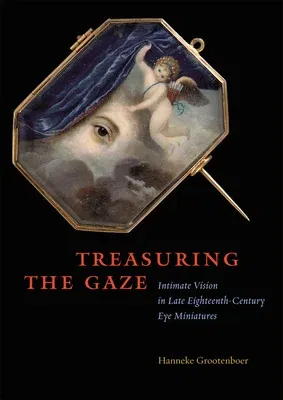The end of the eighteenth century saw the start of a new craze in
Europe: tiny portraits of single eyes that were exchanged by lovers or
family members. Worn as brooches or pendants, these minuscule eyes
served the same emotional need as more conventional mementoes, such as
lockets containing a coil of a loved one's hair. The fashion lasted only
a few decades, and by the early 1800s eye miniatures had faded into
oblivion. Unearthing these portraits in Treasuring the Gaze, Hanneke
Grootenboer proposes that the rage for eye miniatures--and their abrupt
disappearance--reveals a knot in the unfolding of the history of vision.
Drawing on Alois Riegl, Jean-Luc Nancy, Marcia Pointon, Melanie Klein,
and others, Grootenboer unravels this knot, discovering previously
unseen patterns of looking and strategies for showing. She shows that
eye miniatures portray the subject's gaze rather than his or her eye,
making the recipient of the keepsake an exclusive beholder who is
perpetually watched. These treasured portraits always return the looks
they receive and, as such, they create a reciprocal mode of viewing that
Grootenboer calls intimate vision. Recounting stories about eye
miniatures--including the role one played in the scandalous affair of
Mrs. Fitzherbert and the Prince of Wales, a portrait of the mesmerizing
eye of Lord Byron, and the loss and longing incorporated in crying eye
miniatures--Grootenboer shows that intimate vision brings the gaze of
another deep into the heart of private experience. With a host of
fascinating imagery from this eccentric and mostly forgotten yet deeply
private keepsake, Treasuring the Gaze provides new insights into the
art of miniature painting and the genre of portraiture.

